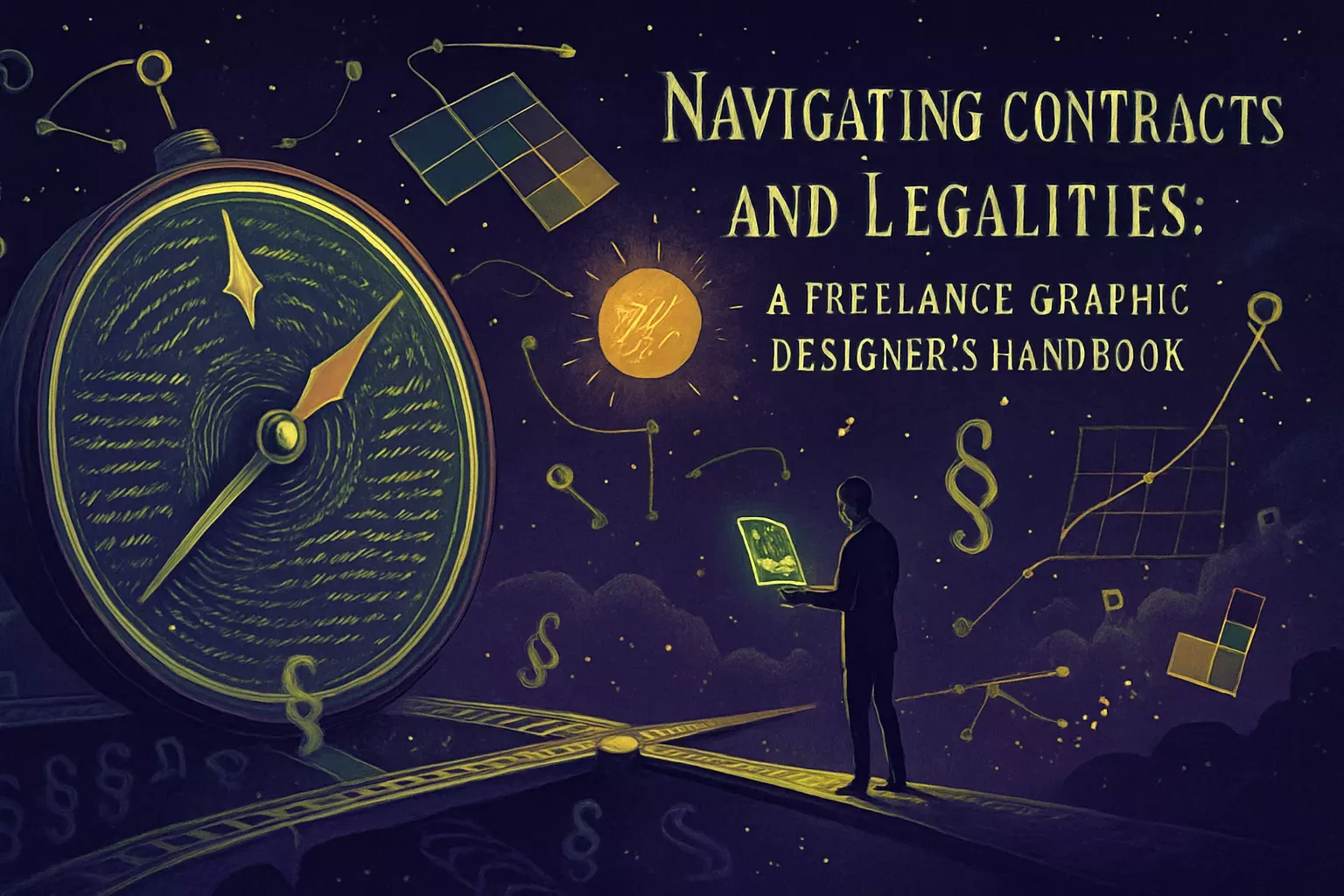Navigating Contracts and Legalities: A Freelance Graphic Designer's Handbook

Navigating Contracts and Legalities: A Freelance Graphic Designer's Handbook
Why Contracts Are Non-Negotiable for Freelancers
Protecting Yourself and Your Client
Establishing Professionalism and Trust
Avoiding Misunderstandings and Scope Creep
Key Elements of a Freelance Graphic Design Contract
Identification of Parties
Detailed Scope of Work
Payment Terms and Schedule
Revision Rounds
Ownership and Usage Rights (Copyright and Licensing)
Confidentiality Clause (If Applicable)
Termination Clause
Indemnification and Limitation of Liability
Governing Law and Dispute Resolution
Understanding Copyright and Intellectual Property
What is Copyright and How Does it Apply to Your Designs?
Transferring Copyright vs. Granting a License
Work for Hire Agreements: Implications for Freelancers
Protecting Your Preliminary Designs and Concepts
Common Legal and Business Considerations
Business Structure (Sole Proprietorship, LLC, etc.)
Tax Obligations for Freelancers
Importance of Professional Liability Insurance (Errors & Omissions)
Non-Disclosure Agreements (NDAs)
Where to Find Contract Templates and Legal Advice
Reputable Online Resources for Contract Templates
When to Consult with a Lawyer
Handling Disputes and Difficult Clients Professionally
Communication as the First Step in Conflict Resolution
Referring to the Contract
Knowing When to Escalate (Mediation, Legal Action)
Conclusion: Building a Legally Sound Freelance Practice
References
Navigating Contracts and Legalities: A Freelance Graphic Designer's Handbook
Why Contracts Are Non-Negotiable for Freelancers
Protecting Yourself and Your Client
Establishing Professionalism and Trust
Avoiding Misunderstandings and Scope Creep
Key Elements of a Freelance Graphic Design Contract
Identification of Parties
Detailed Scope of Work
Payment Terms and Schedule
Revision Rounds
Ownership and Usage Rights (Copyright and Licensing)
Confidentiality Clause (If Applicable)
Termination Clause
Indemnification and Limitation of Liability
Governing Law and Dispute Resolution
Understanding Copyright and Intellectual Property
What is Copyright and How Does it Apply to Your Designs?
Transferring Copyright vs. Granting a License
Work for Hire Agreements: Implications for Freelancers
Protecting Your Preliminary Designs and Concepts
Common Legal and Business Considerations
Business Structure (Sole Proprietorship, LLC, etc.)
Tax Obligations for Freelancers
Importance of Professional Liability Insurance (Errors & Omissions)
Non-Disclosure Agreements (NDAs)
Where to Find Contract Templates and Legal Advice
Reputable Online Resources for Contract Templates
When to Consult with a Lawyer
Handling Disputes and Difficult Clients Professionally
Communication as the First Step in Conflict Resolution
Referring to the Contract
Knowing When to Escalate (Mediation, Legal Action)
Conclusion: Building a Legally Sound Freelance Practice
References
Posted Jun 11, 2025
Protect your work and business with this essential guide to contracts, copyright, and legal considerations for freelance graphic designers.






